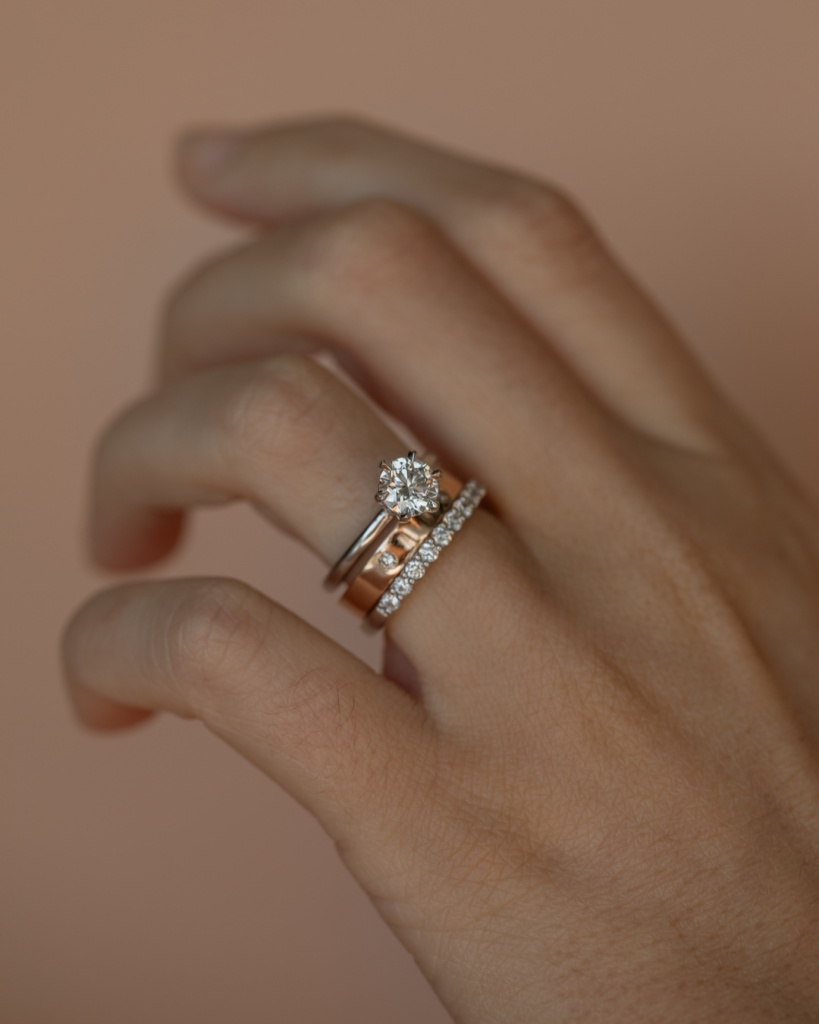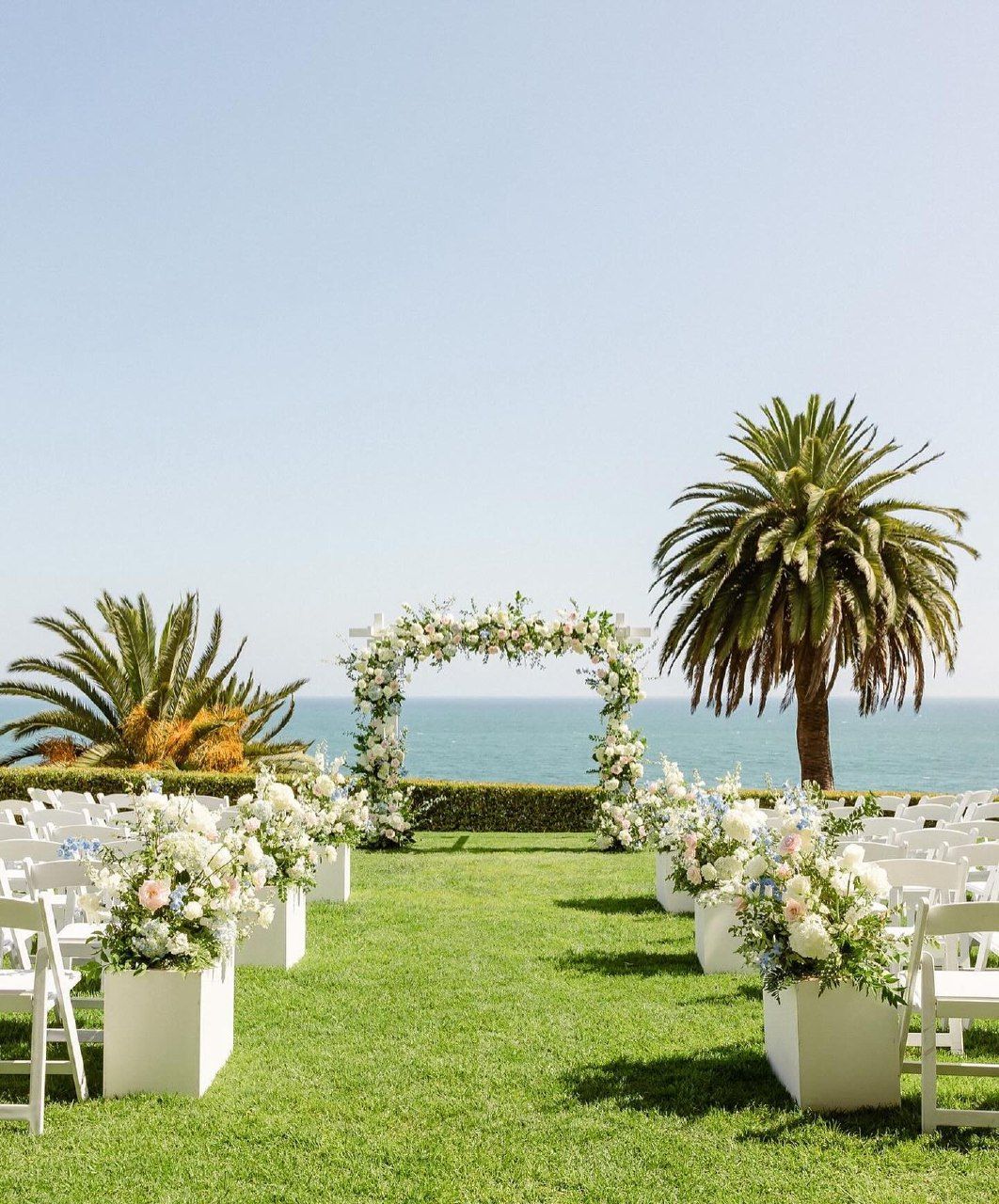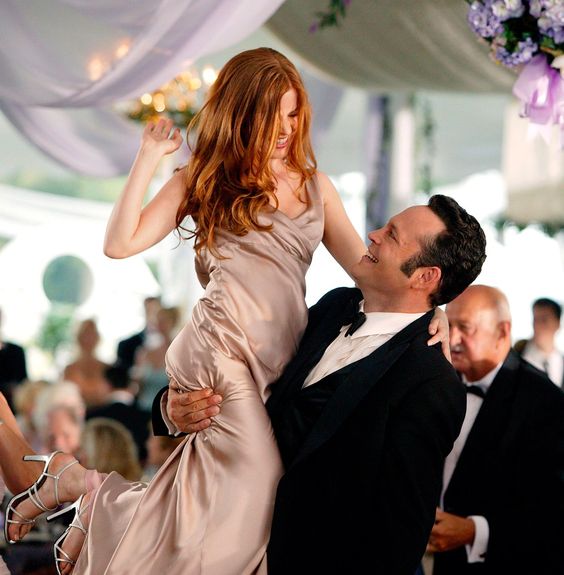Exploring the Average Engagement Ring Size: Insights and Tips
- Author: Natali Grace Levine
- Reading time: 6 min 54 sec
- Publication date: 07/11/2024
- Updated: 01/14/2025


When stepping into the world of diamonds, understanding the four C's—carat, cut, color, and clarity—is crucial. The carat, measuring the weight of the diamond, significantly impacts the perceived size of the gem on your beloved's finger. Yet, our latest data suggests that when selecting an engagement ring, couples prioritize the diamond's cut and shape over its carat size. Round-cut diamonds remain the most favored option, capturing 41% of preferences due to their timeless appeal and brilliant sparkle. Noted jewelers emphasize that the quality of these factors often overshadows mere size. It's the finesse and intricacy of the cut that can transform a diamond into a masterpiece, making it a symbol of depth and enduring love more than just a statement of wealth.
Find Your Perfect Wedding Vendors
What Is the Average Size of an Engagement Ring?


Determining the average size of an engagement ring is more than just about numbers—it's about understanding current trends and preferences that vary globally and culturally. Our most recent data reveals that the most common engagement ring size in terms of carat weight currently stands at approximately 1.2 carats. This figure represents a balance many couples find appealing between noticeable size and affordability.
Regional Variations
The average size of an engagement ring can differ significantly from one region to another. In the United States, the preference leans towards slightly larger sizes, with the Northeast showing a particular fondness for stones that are around 1.3 carats on average. Contrastingly, in European countries such as the United Kingdom and France, the average size tends to be a bit smaller, around 0.6 to 0.8 carats. These differences can be attributed to various factors including economic conditions, cultural significance attributed to engagement rings, and local fashion trends.
Impact of Economic Factors
Economic conditions play a crucial role in determining what consumers feel comfortable spending on engagement rings. During periods of economic prosperity, there is a noticeable increase in the average carat size of diamonds purchased for engagement rings. Conversely, in tougher economic times, buyers tend to prioritize cost over carat size, opting for smaller but higher-quality stones to maximize their investment.
Influence of Diamond Shape and Cut
The appearance of a diamond's size is also influenced by its shape and cut. For instance, elongated shapes like oval, marquise, and pear can appear larger than a round diamond of the same carat weight due to their extended surface area. The cut of the diamond affects not only its brilliance and fire but also how large it appears. A well-cut diamond can appear larger than its actual carat size would suggest due to its ability to reflect light more effectively.
Trends in Diamond Alternatives
There's also a growing trend towards alternative gemstones that can affect the average size of an "engagement ring" stone. Stones like moissanite, sapphires, and lab-grown diamonds are becoming popular choices for those seeking larger stones without the corresponding price tag of a natural diamond. These alternatives often allow couples to purchase larger stones while staying within a budget, influencing the overall average sizes reported.
What This Means for Buyers
For buyers, this data is a starting point to understand what you might expect when shopping for an engagement ring. Knowing the average sizes can help set a baseline, but it's important to consider personal preference, lifestyle, and budget. It's also crucial to remember that while the carat weight contributes to the overall size appearance of the ring, the sentiment and meaning behind it carry the true value.
Armed with this information, couples can make informed decisions that balance tradition, personal taste, and economic considerations, ensuring the choice of an engagement ring that feels both special and sensible. Whether you opt for the average size or choose a path less traveled by selecting a unique stone or setting, what matters most is that the ring symbolizes your commitment and love.
Maximizing the Appearance of Your Engagement Ring's Carat Size on a Budget


In the quest for a larger-looking engagement ring without a significant price increase, there are several strategies you can employ. These tips can help you maximize the visual impact of your ring while keeping costs manageable.
Choose a Slimmer Setting
Opting for a slimmer setting can enhance the perceived size of the diamond. A thin band minimizes the amount of metal visible and maximizes the stone's prominence. This type of setting draws the eye directly to the gem, making it appear larger and more striking. Additionally, a slimmer band can be less expensive as it uses less metal, potentially allowing you to allocate more of your budget to the diamond itself.
Opt for a Halo Design
A halo setting involves encircling the main stone with smaller diamonds. This not only adds additional sparkle but also creates an illusion of a larger central diamond. The collective brilliance of the halo can make the center stone appear up to half a carat larger. Furthermore, because smaller diamonds cost less per carat, this setting offers a way to get more visual impact for less money compared to increasing the size of the central stone alone.
Consider Less Common Diamond Shapes
Different diamond shapes can affect the perception of size. Elongated shapes like the oval, marquise, and pear provide a larger surface area and tend to look bigger than round or princess-cut diamonds of the same carat weight. These shapes also tend to be less in demand than the classic round cut, which can sometimes mean they are priced more favorably, giving you a larger look for a similar or lower price.
Go for a Shallower Cut
While a deep-cut diamond may have better light reflection and therefore more brilliance, a shallower-cut diamond will have a larger surface area, making it appear bigger when viewed from above. This can be a trade-off between size and sparkle, but if size is your primary concern, a slightly shallower cut can achieve a larger visual appearance. It's important to balance the cut quality with carat size to ensure the diamond still has good visual performance.
Choose a Lighter Color Metal
The band color can significantly impact the perception of the diamond's size. Lighter metals, such as white gold or platinum, can enhance the visual size of the diamond by reflecting more light. This is particularly effective for diamonds that are slightly lower in color grade, as the bright metal can help mask any color in the diamond and make it appear larger and brighter.
Purchase Just Under Popular Carat Sizes
Diamond prices increase disproportionately at full and half-carat marks. By choosing a diamond that is just shy of these popular weights—for example, selecting a .97-carat instead of a full 1-carat—you can get a stone that looks nearly the same size but costs significantly less. This strategy takes advantage of pricing structures and can be an excellent way to stretch your budget further without sacrificing visual impact.
Ring Carat Sizes: FAQs


Choosing the right carat size for an engagement ring is a significant decision that can influence both the aesthetics and the cost of the ring. Here, we answer some of the most frequently asked questions about ring carat sizes to help you make an informed choice that aligns with your personal preferences and budget.
What is Considered a Large Engagement Ring?
A large engagement ring typically features a diamond that is 2 carats or larger. Rings of this size are considered quite substantial and are often sought after for their impressive appearance and standout quality. However, the perception of what is "large" can vary depending on personal tastes and regional trends. In some circles or regions, even a 1.5-carat diamond might be viewed as large.
Does a Higher Carat Size Mean a Better Ring?
Not necessarily. While a larger carat size can increase the ring’s presence on the hand, it doesn’t always mean the ring is of better quality. The overall appeal and quality of a diamond ring also depend heavily on other factors such as the diamond’s cut, clarity, and color. A smaller diamond with excellent cut, clarity, and color might often look more beautiful and be more valuable than a larger diamond with poor characteristics.
Is There a Recommended Carat Size for Engagement Rings?
There is no one-size-fits-all answer to the ideal carat size for an engagement ring; it largely depends on personal preference, lifestyle, and budget. However, the standard engagement ring size tends to range from 1 to 1.5 carats. These sizes are substantial enough to make a statement while still being practical for everyday wear.
Can the Carat Size Affect the Ring's Price?
Yes, the carat weight of a diamond significantly impacts the price. Diamonds are priced per carat, and the price per carat increases exponentially with size due to the rarity of larger diamonds. Therefore, a 2-carat diamond will not just be double the price of a 1-carat diamond; it could be three to four times more expensive, assuming they have similar color, clarity, and cut.
Are There Ethical Concerns with Larger Diamonds?
Larger diamonds can sometimes come with greater ethical concerns, such as the environmental impact of mining and the potential for conflict funding. It's important to source diamonds from retailers who adhere to strict ethical standards and provide transparency about where and how their diamonds are mined. Opting for lab-grown diamonds could be a more ethical choice, as they require less environmental disruption and are guaranteed conflict-free.
How Should I Balance Carat Size with Other Diamond Qualities?
Balancing carat size with other qualities involves deciding what aspects of the diamond are most important to you. If size is a priority, you might choose a larger stone with slight compromises in color or clarity. However, for many, a smaller diamond with excellent cut, color, and clarity can be more appealing than a larger one with visible imperfections. It's often advisable to prioritize cut quality, as a well-cut diamond will display more brilliance and fire, making it appear larger and more sparkling.
Can I Upgrade My Diamond Size Later?
Many jewelers offer diamond trade-up programs, allowing you to upgrade to a larger or higher quality diamond in the future. These programs typically require that the new diamond you purchase be of a certain value higher than the original. Upgrading can be a great option for couples who might have a smaller budget when they first get engaged but plan to invest more into the ring as their financial situation improves.


















